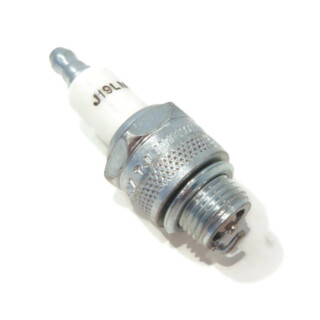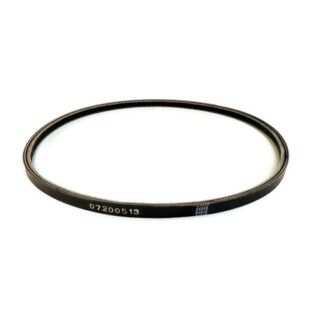
Prepare, Don’t Repair: Snowblower Preseason Maintenance Checklist
Looking for maintenance tips for your snowblower or snow thrower?
You might not typically put “snow removal” on your list of hobbies. But with a snowblower? That’s a different story.
Of course, you don’t get the fun of using a snowblower without doing some maintenance. Whether you’re clearing snow from your driveway and sidewalk or making your parking lot or roadway safe, it’s important to make sure your snowblower (or snow thrower) gets the tune-up it needs.
So how do you maintain a snowblower, then? You’re in luck. We’ve put together a list of tips to help you get your snowblower ready for winter. Here’s what we’ll be covering:
- Inspect the shave plate and skid shoes.
- Keep spare shear pins on hand.
- Give your spark plug a good look.
- Examine your belts.
- Maintain the fuel and oil systems.
Keep in mind that the best time to perform maintenance on your snowblower/snow thrower is before putting it into off-season storage.4
However, if you didn’t service your equipment at last winter’s end, make sure you perform the needed maintenance as soon as possible. You don’t want a weather front to catch you unprepared, and you don't want to break your snowblower by using it when it wasn't ready to tackle the job.
For a summarized version, you can check out this printable snowblower maintenance checklist for your preseason prep. (It’s also available at the bottom of this page.)
1. Inspect the shave plate and skid shoes
Checking these components is key to preparing your snowblower for winter, as not doing so can have some pretty unpleasant consequences for your equipment.
The shave plate (also known as the scraper bar) is what skims the snow off the ground into the auger. It’s important to check it frequently; if it wears down too far, it can damage the blower housing.1, 4
For a single-stage unit, a.k.a. a snow thrower (which doesn't have a discharge fan), if the plate/bar is worn, you may be able to reverse it and keep using the same one until that edge is also worn. With a two-stage unit, a.k.a. a snowblower (which does have a discharge fan), the shave plate can’t be reversed.2
Bottom line: if it’s more ragged than rugged, it must be replaced.
Skid shoes (the adjustable pieces which allow you to set the auger height) only come installed on two-stage units. If yours look beat up, try flipping them—most are reversible. Just be sure to replace them the following year.1, 2, 4





2. Keep spare shear pins on hand
Shear pins are a safeguard. Though they attach the auger and gear case, they’re designed to break to protect the auger if it encounters too much strain. If you plan to do a lot of snowblowing this season, make sure you have plenty of backups in case of heavy storms and ice.1, 2, 4
You don't want to be forced to stop in the middle of a job. Being able to replace your shear pins right away will help you keep moving with your equipment and avoid unscheduled downtime.
Need a good place to purchase shear pins? Our inventory of replacement shear pins covers many brands used today.
3. Give your spark plug a good look
It’s important to do this every season or every 100 working hours for gas-powered units.1
Detach the lead from the plug, removing the plug with a socket wrench. You can use a wire brush to remove any light deposits, but if there are heavy deposits, scrapes, or other damage, your plug needs to be replaced.
When re-installing the plug or putting a new one in, fit it snugly but not overly so.2
If it's replacement time, The ROP Shop also has you covered with our selection of spark plugs.
4. Examine your belts
You might need to check your owner’s manual for the location of the belt cover. Once you’ve found that and removed it, take a picture of the belt locations for reference. If the belts show cracks or other signs of weakening, they should be replaced.2, 4
Keep in mind that a belt will stretch over time. Installing replacements can be tricky; the new belt will be tighter than the old one. Whether you’re leaving the old belts on or swapping them for new ones, don’t forget to check your pulleys to make sure you’ve got proper tension.4





5. Maintain the fuel and oil systems
The addition of ethanol to fuel can cause problems in small engines.3
Because of this, it’s vital that the fuel be drained from your tank and carburetor before storing your unit at the end of the season.
If this isn’t done properly, varnish can form in your fuel system, and rubber and plastic parts might stiffen.
When using your snowblower, fill it up with fresh gas and make sure to use a fuel stabilizer. This will help prevent clogs and will keep the gas fresh longer.
As for the oil system, first check your owner’s manual and verify you have the recommended oil before starting. Then look at your oil level to make sure it’s within running range. Start your blower’s engine so that the oil has a chance to warm up and flow more easily. Then turn the engine off. Let your oil drain into a catch container by pulling the drain plug. Once it’s drained, put the plug back in. Follow your user’s manual to refill the oil with the proper amount and weight. 4
Final thoughts
Proper preseason maintenance for your snowblower will help it to last longer, letting you get more use out of it and saving you money on potentially costly repairs.
But what about after winter is over? Don't worry: we've got an article on end-of-season maintenance for your snowblower that you can consult when the time comes.
You can also brush up on your snowblower skills with our article on snowblowing tips and tricks.
Need replacement parts for your snowblower?
The ROP Shop might just have what you need. Not sure what part to buy? Have questions about our snowblower parts and accessories? Give us a call or shoot us an email! We’d be glad to lend you hand and help keep your rugged equipment running.
WRITTEN BY: KATE HUFFMAN [EDITED 10/2023]
- https://www.snowblowersdirect.com/stories/1768-How-to-Tune-Up-Any-Style-of-Snow-Thrower.html
- https://www.searshomeservices.com/blog/8-snow-blower-maintenance-tips
- https://www.consumerreports.org/cro/news/2013/03/gas-with-ethanol-can-make-small-engines-fail/index.htm
- https://www.jackssmallengines.com/diy/a-beginners-guide-to-snow-blower-maintenance/

Having trouble using your ROP Shop pressure washer surface cleaner? These tips can help you out.

Thinking about getting a pressure washer? Here are eight advantages to owning a pressure washer to help convince you.

Installing a new pressure washer pump doesn’t have to be a hassle. Let The ROP Shop walk you through it.

Ready to learn how to pressure wash quickly, effectively, and safely? Check out these eleven tips.